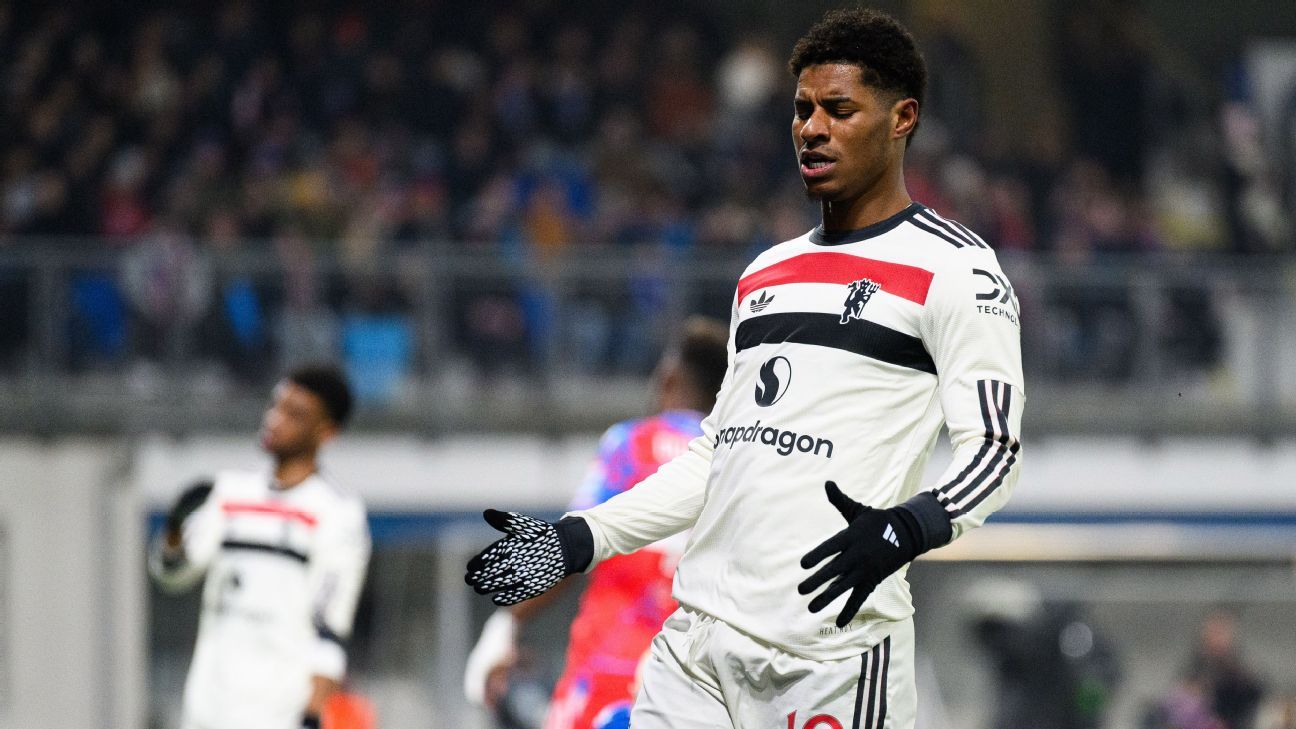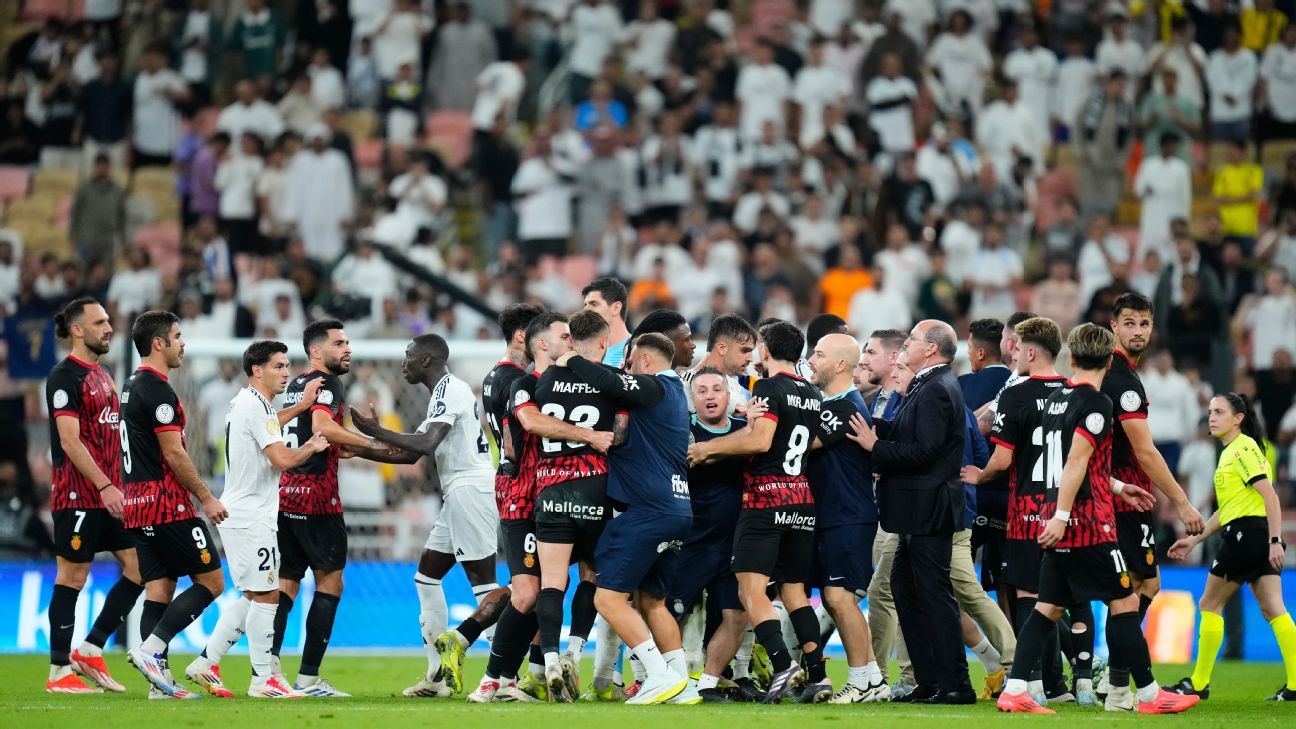
Dale Johnson, General Editor, ESPN FCMay 20, 2024, 01:13 PM
Video Assistant Referee causes controversy every week in the Premier League, but how are decisions made, and are they correct?
After each weekend we take a look at the major incidents, to examine and explain the process both in terms of VAR protocol and the Laws of the Game.
- How VAR decisions have affected every Prem club in 2023-24
- VAR in the Premier League: Ultimate guide
In this week's VAR Review: Was referee Michael Oliver correct to reject the VAR's advice and award Arsenal's winner against Everton? Plus, why Wolverhampton Wanderers' Nélson Semedo saw red against Liverpool.
Arsenal 2-1 Everton
Possible handball: Jesus before Havertz goal
What happened: Arsenal thought they had won the game in the 89th minute. Gabriel Jesus collected the ball halfway inside the Everton half and fed a pass to Martin Ødegaard. The Norway international scuffed a shot and the ball ran to Kai Havertz, who scored from close range. However, the VAR, Stuart Attwell, directed referee Michael Oliver to the screen to disallow the goal for handball in the buildup by Jesus.
VAR decision: Goal stands, overturn rejected at the monitor.
VAR review: It was only the second time this season a referee has stuck by the original decision and, like the first occasion, the Premier League's Independent Key Match Incidents Panel may rule it was incorrect to do so.
The first example came in September, when referee Darren England rejected the advice of VAR Robert Jones that a stoppage-time penalty awarded to Aston Villa against Crystal Palace should be overturned. The panel voted 4-1 that the VAR's intervention was correct.
Accidental attacking handball only applies to the goal scorer, so it has to be a deliberate act for Havertz's goal to be ruled out. It's all about how Jesus moves his body to control the ball: if you think the touch on the arm was accidental it's a fair goal; if you believe the striker has turned his arm into it to move it forward into his path then it's deliberate. Oliver thought it was the former; Attwell the latter.
It will split opinion and it comes down to how you view Jesus' movement.
We should be seeing referees stick with their own decision more often, though the KMI Panel's judgements suggest there have been only five other occasions this season. This didn't stick out as an obvious situation where the referee should ignore the VAR.
So what about consistency? Last weekend, AFC Bournemouth had a Dominic Solanke goal ruled out against Brentford for handball in the buildup by Antoine Semenyo, with the ball touching his arm in midfield before he created the goal. The KMI Panel ruled that to be the fifth incorrect VAR overturn this season, voting 4-1 that the goal should have stood.
You can argue that allowing the Arsenal goal to stand is consistent with the KMI Panel's assessment of the Bournemouth goal, yet Semenyo didn't lean into the path of the ball and there was a far greater case for it being accidental.
In doing do, Oliver became the first referee in the Premier League to reject a VAR's advice for a second time. The previous case came last season in Nottingham Forest vs. Bournemouth, when Oliver stuck with a penalty he'd awarded for handball.
There was also a claim for a possible handball before a goal for West Ham United's goal at Manchester City. The ball touched the arm of Tomás Soucek before Mohammed Kudus scored, but it was by his side and accidental.
Liverpool 2-0 Wolves
Possible red card: Semedo challenge on Mac Allister
What happened: Nélson Semedo was shown a yellow card by referee Chris Kavanagh in the 28th minute for a challenge on Liverpool midfielder Alexis Mac Allister. However, there was a check for a red card from the VAR, David Coote.
VAR decision: Yellow card upgraded to red.
VAR review: It was perhaps predictable that Wolves would have another decision go against them after they trigged a vote for VAR to be scrapped at the Premier League AGM on June 6. This decision means their VAR score across the past five seasons is -18 (33 VAR overturns have gone against them, with 15 in their favour). The magnitude is shown by next worst-affected clubs being Arsenal and West Ham United on -6.
It's been a discussion point throughout the season that the Premier League is a little too lenient when it comes to serious foul play challenges, and there's no doubt Wolves will argue it's no different to several others which haven't led to a VAR red card and not "clear and obvious." Think Chelsea's Moisés Caicedo on Liverpool midfielder Ryan Gravenberch in the Carabao Cup final, or Malo Gusto's tackle on Fulham midfielder Willian, or the mistimed challenge by Manchester United defender Harry Maguire on Sasa Lukic.
In each of those three cases, the defender was deemed to be stepping into a challenge and arrived just after the ball had gone. The nature of the tackle, even though contact on the opponent it was above the boot, couldn't be considered to have excessive force.
Semedo's tackle had a few key factors which make it different. He goes over the top of the ball and makes contact with Mac Allister's shin, notably above ankle height. The challenge is made with an angled boot with studs leading, a marked difference to how a player would make the tackle when stepping in to try to win the ball.
He is starting to run into the challenge, which creates a degree of force, and goes in with a jumping motion which creates a lunge-effect and catches Mac Allister high above the shin. It's a certain VAR red card.
Mac Allister may have both feet off the ground at one stage too, yet he doesn't go over the top of the ball into the opponent's shin with his studs.
Brentford 2-4 Newcastle
Possible penalty overturn: Mbeumo challenge on Hall
What happened: Referee Simon Hooper awarded Newcastle United a penalty in the 76th minute when Bryan Mbeumo clipped the foot of Lewis Hall as he ran into the area. But where did the foul take place? It was looked at by the VAR, Paul Tierney.
VAR decision: Penalty cancelled, foul outside the area.
VAR review: We've talked in recent weeks about how a penalty from an inadvertent clip of an attacker, or one which wouldn't be visible without the footage being slowed down, has to be given on the field and won't be awarded through a review.
For this, we always refer to the red card and penalty for Arsenal's David Luiz against Wolves in 2021. It was identical to this incident, in terms of the kind of offence, and was also given on the field.
The more obvious recent example came in the North London derby, with Dejan Kulusevski's back foot brushing the leg of Leandro Trossard and causing him to go down in the area. That wasn't given by the referee and the KMI Panel unanimously voted that it shouldn't be a spot kick.
Yet here we are with Newcastle awarded a penalty for just that. Mbeumo was running behind Hall, whose trailing foot touched the Brentford player and he tripped over into the area. It's a major problem with VAR which will always serve up a feeling of inconsistency: a penalty can be given on the field in one game, but it won't in another even though there are similarities.
On this occasion the spot kick didn't stand, because the foul contact was outside the area. It's another odd one, because almost the whole of Hall's body is inside the penalty box -- apart from that trailing leg. And it's the point of contact of the foul that decides where an offence has taken place, not where the rest of an attacker's body may be. Hall's back leg was the other side of the line, so a free kick was the correct outcome.
More controversially, last week Newcastle United's Anthony Gordon wanted a spot kick against Manchester United when his heel appeared to be stood on by Sofyan Amrabat. When asked about the incident after the game, Gordon said: "I don't understand the point of VAR."
The freeze-frame of the incident makes it seem a certain penalty, in fact some would say that makes it appear a possible red card. But how an incident looks at normal speed plays a significant part. If the contact can't be detected without a forensic analysis, can it be a referee error not to give a penalty? The KMI Panel again unanimously voted the VAR was right to stay out of it. It's the kind of situation which supporters struggle to understand but, as far as the Premier League is concerned, it's the intended application of VAR.
Man City 3-1 West Ham
Possible handball: Soucek when scoring
What happened: West Ham thought they had found a route back into the game in the 88th minute when Tomás Soucek helped the ball in after a corner routine. The goal was checked for a possible handball by the VAR, Jarred Gillett.
VAR decision: Goal disallowed.
VAR review: One of the clearer handball goals we're likely to see. Soucek puts out an arm to divert the ball into the goal. It's what fans thought VAR would be for rather than those toenail-offside situations.
It's the kind of handball that a player should be booked for, but such factual decisions are made by the VAR and a yellow card can result only from a review if a referee has visited the monitor.
Sheffield United 0-3 Tottenham
Possible red card overturn: Violent conduct by Brooks on Son
What happened: Referee Andy Madley showed the red card to Sheffield United's Andre Brooks in the 78th minute for an off-the-ball incident leading up to a corner. The VAR, Tim Robinson, checked to see if it was the correct decision.
VAR decision: Red card rescinded.
VAR review: Another example of a huge injustice being corrected. Madley felt that Brooks had kicked Son Heung-Min but the referee has misread the situation. Brooks just stood on the toe of the Tottenham Hotspur player, and there wasn't any violent conduct.
Indeed, such was the nature of the VAR overturn that the red wasn't even downgraded to a yellow and the disciplinary action was completely cancelled.
Some factual parts of this article include information provided by the Premier League and PGMOL.
 (1).png)
 7 months ago
32
7 months ago
32















